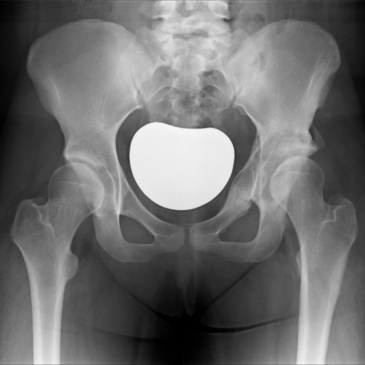Hip osteotomy
Hip Osteotomy is a corrective procedure performed around the hip joint to normalise the joint function.
There are different types of osteotomies performed around the hip joint. The procedure is mainly indicated in the treatment of hip dysplasia. Hip dysplasia is a clinical condition where the hip joint socket is shallow. The shallow socket results in an abnormal loading and there by it leads to early wear and tear changes in the hip joint. The condition if detected and treated at infancy leads to a near normal hip joint. In minority of the cases, patients can present with hip dysplasia for the first time in their 2rd, 3rd or 4th decade. The onset of symptoms is a sign of failing hip joint. The frequency of symptoms increases with time. In untreated cases, this condition can result in the onset of wear and tear changes (arthritis).
Patients can present with groin pain, limp or clicking. Patients can also complain of dull ache (due to muscle fatigue) around the side of the hip joint.
X-rays help to diagnose the condition (Figure 1). Further evaluation is performed by CT or MRI scans. The treatment depends on the age at diagnosis and severity of the condition. In absence of wear and tear changes, selected patients can be treated by pelvic osteotomy. This procedure preserves the native hip joint and restores the weight bearing portion of the hip joint to near normal. It helps to restore the forces transferred across the joint to near normal status.

Figure 1: Dysplasia of the Both Hips
While there is variety of techniques to achieve this aim, the most successful technique is periacetabular osteotomy described by Ganz (Bernese periacetabular osteotomy). This technique involves bony cuts made around the socket to free it from the surrounding bone. The socket is then placed in to an optimal position. A period of six weeks of mobilisation with the aid of crutches is advised following this procedure. Figure 2 shows x-rays of the patient who has had Ganz pelvic osteotomy. If the patient has dysplasia with associated wear and tear changes (arthritis) in the hip joint (Figure 3), he or she would benefit from Total hip replacement.

Figure 2: Dysplasia of the Left Hip treated by Ganz Osteotomy.
Further reading
- Minimally Invasive Periacetabular Osteotomy: Prof Kjeld Soballe
http://www.soballe.com/default.asp?MainMenuId=104&PageId=104&Desc=English


 About the Glasgow Hip Clinic
About the Glasgow Hip Clinic